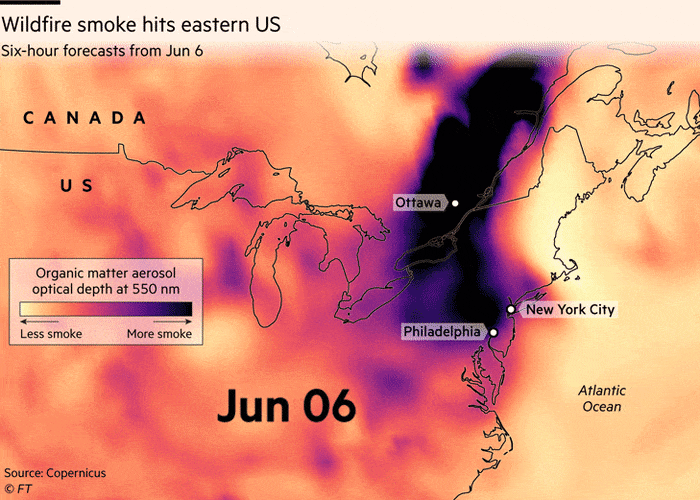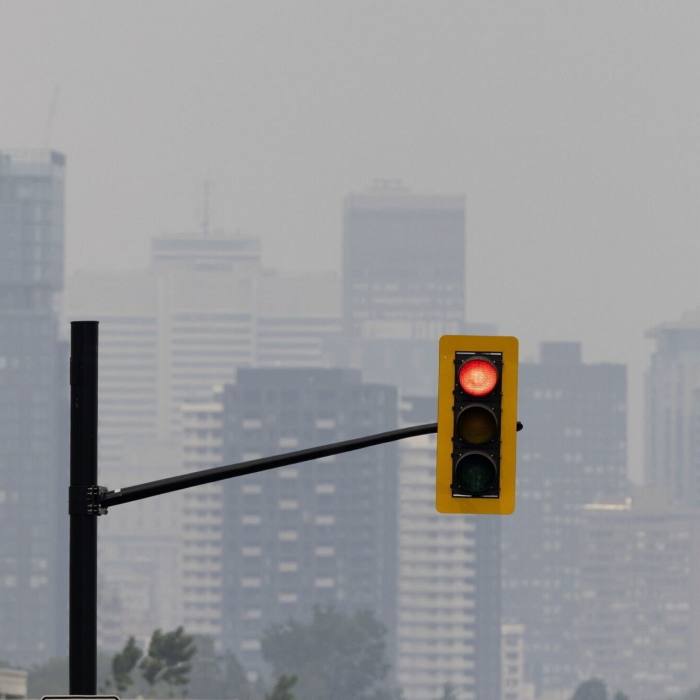Millions of people in the eastern United States and Canada received health warnings from environmental regulators as thick smoke from the northern wildfires spread over cities from Ottawa to New York.
Canada has been battling wildfires in its 10 provinces and territories for much of the past month. Smoke from fires in some of North America’s most populous cities swept south this week.
New York City’s air quality on Wednesday was ranked the worst of any major urban area in the world, overtaking New Delhi. IQAir World Air Quality Index.
As the Covid-19 emergency subsides, New York residents once again donned masks. Schools canceled outdoor activities and the city urged vulnerable New Yorkers to stay inside and close windows.

“Yesterday, New Yorkers saw and smelled something that has never affected us on this scale before,” New York City Mayor Eric Adams said Wednesday morning, noting the event sent “shock waves throughout the city.”
After easing Wednesday morning, New York officials predicted conditions would worsen again in the afternoon and evening, calling it a “multi-day event.” On Wednesday afternoon the US aviation regulator issued “ground delays” for flights to Philadelphia, Newark and New York’s LaGuardia airports, citing “low visibility” for pilots.
Washington’s public schools also suspended outdoor activities for students as the city’s environmental regulator issued a “code red” air-quality warning for the District of Columbia.
The Canadian Environment Agency has classified air quality in the nation’s capital, Ottawa, as reaching the highest level of health risk. Large parts of Quebec and Ontario are under air quality warnings from Canadian officials.

Smoke rises from wildfires in Quebec and Ontario in a satellite image © AP

Smoke from wildfires in Montreal, Quebec © Allen McInnis/Bloomberg
Earlier this spring, wildfires in Canada’s oil-producing province of Alberta forced tens of thousands of people to evacuate their homes, and a dozen oil and gas companies temporarily shut down or reduced operations.
More fires are now burning in eastern provinces such as Quebec and Nova Scotia. As of Wednesday, more than 400 fires remain active across Canada, burning about 4 million hectares so far this year. Canadian Interagency Forest Fire Centre.
Scientists have observed fires spreading across the Northern Hemisphere’s boreal forests over the past decade, with average temperatures rising faster across the planet’s north than near the equator. The Arctic is melting.
Wildfires north of the equator are generally becoming more frequent and intense as the planet warms and summers heat up. According to the Copernicus EU monitoring service, May 2023 was the second warmest May on record worldwide.
Heat records have been broken in parts of Asia, particularly in China and Vietnam, where unusually hot weather began months before the usual July and August summer. Parts of Siberia also set all-time records last week.
Sea surface temperatures were the highest on record for the month and have been near record levels since March.
Climate capital

Climate change is where business, markets and politics meet. Explore the FT’s coverage here.
Are you curious about FT’s environmental sustainability commitments? Learn more about our science-based goals here